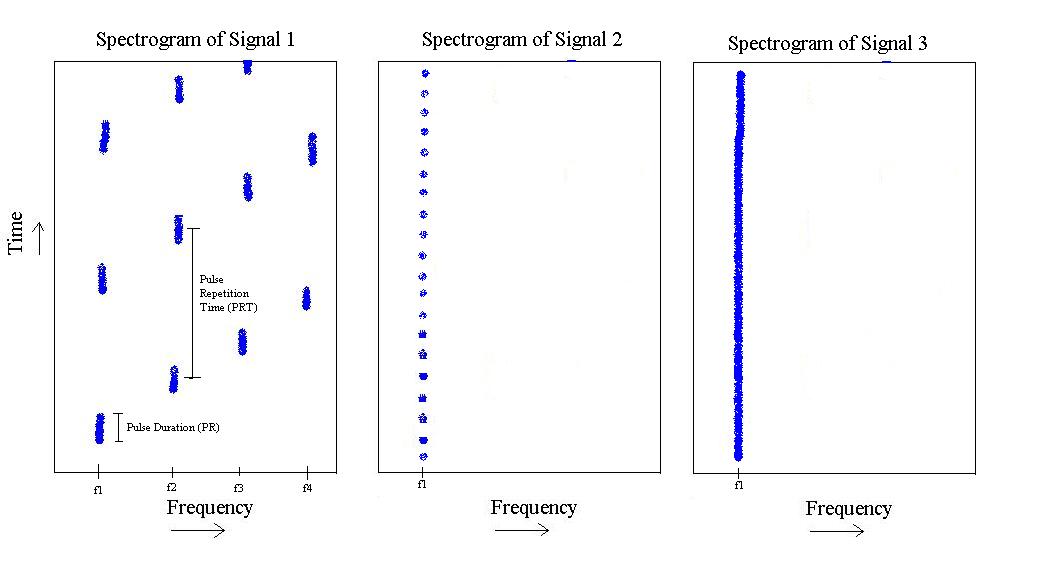I am trying to research and figure out how best to attack this problem. It straddles music processing, image processing, and signal processing, and so there are a myriad number of ways to look at it. I wanted to inquire as to the best ways to approach it since what might seem complex in the pure sig-proc domain might be simple (and already solved) by people who do image or music processing. Anyway, the problem is as follows: 
If you forgive my hand drawing of the problem, we can see the following,:
From the above figure, I have 3 different 'types' of signals. The first one is a pulse that sort of 'steps' up in frequency from $f_1$ to $f_4$, and then repeats. It has a specific pulse duration, and a specific pulse-repetition time.
The second one only exists at $f_1$, but has a shorter pulse length and a faster pulse repetition frequency.
Finally the third one is simply a tone at $f_1$.
The problem is, in what way do I approach this problem, such that I can write a classifier that can discriminate between signal-1, signal-2, and signal-3. That is, if you feed it one of the signals, it should be able to tell you this signal is so and so. What best classifier would give me a diagonal confusion matrix?
Some additional context and what I have been thinking of thus far:
As I said this straddles a number of fields. I wanted to inquire as to what methodologies might already exist before I sit down and go to war with this. I dont want to inadvertently re-invent the wheel. Here are some thoughts I have had looking from different view points.
Signal-Processing Standpoint: One thing I have looked at was doing a Cepstral Analysis, and then possibly using the Gabor Bandwidth of the cepstrum in discriminating signal-3 from the other 2, and then measuring the highest peak of the cepstrum in discriminating signal-1 from signal-2. That's my current signal-processing working solution.
Image-Processing Standpoint: Here I am thinking since I CAN in fact create images vis-a-vis the spectrograms, perhaps I can leverage something from that field? I am not intimately familiar with this part, but what about doing a 'line' detect using the Hough Transform, and then somehow 'counting' the lines (what if they are not lines and blobs though?) and going from there? Of course at any point in time when I take a spectrogram all the pulse s you see might be shifted along the time axis, so would this matter? Not sure...
Music-Processing Standpoint: A subset of signal processing to be sure, but it occurs to me that signal-1 has a certain, perhaps repetitive (musical?) quality that people in the music-proc see all the time and have already solved in maybe discriminating instruments? Not sure, but the thought did occur to me. Perhaps this stand point is the best way to look at it, taking a chunk of the time domain and teasing out those step-rates? Again, this is not my field, but I heavily suspect this is something that has been seen before... can we look at all 3 signals as different types of musical instruments?
I should also add that I have a decent amount of training data, so perhaps using some of those methods might just let me do some feature extraction which I can then utilize K-Nearest Neighbor with, but thats just a thought.
Anyway this is where I stand right now, any help is appreciated.
Thanks!

